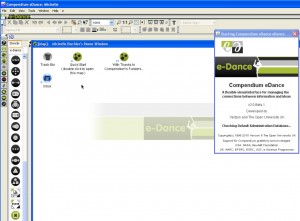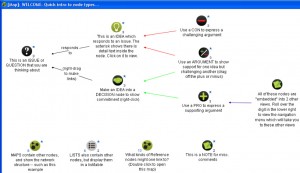Compendium e-Dance edition released!
5 05 2010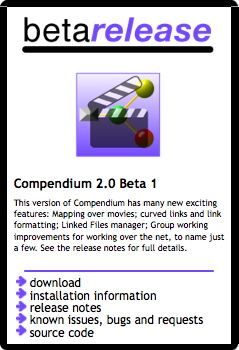 Hurrah! All of the extensions that we added to Compendium during the e-Dance project have now been folded into the new Compendium 2.0 beta release, available free and open source via the Compendium Institute download page.
Hurrah! All of the extensions that we added to Compendium during the e-Dance project have now been folded into the new Compendium 2.0 beta release, available free and open source via the Compendium Institute download page.
In addition to adding further controls over the aesthetic appearance of knowledge maps, and significant ‘under the bonnet work’ to make the software leaner and faster when working on collaborative projects over the internet, the key new feature is “Movie Maps”. From the release notes:
Movie Maps: You can bring videos directly into a new kind of Compendium view, called a “Movie Map.” With this you can add nodes and links on top of a movie, having these annotations appear and disappear wherever you want over the length of the video. You can even animate maps without a video, so that you can add movement to your maps.
As part of creating a visual language tuned to choreographic research and practice, there is also an e-Dance stencil, ie. a custom (and editable) palette of icons representing camera/stage setups and compositional structures. These can be dragged and dropped onto maps as part of the annotation process. Two examples are shown below:
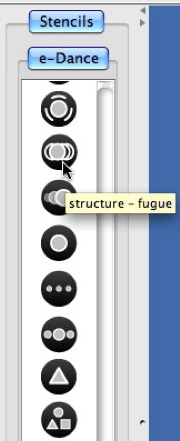
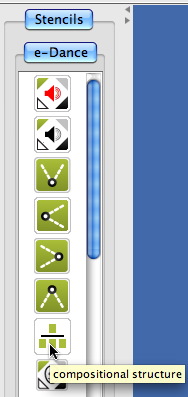
The desire to create aesthetically pleasing look and feel customised to the user community led us to break out some of the key graphical elements in Compendium into set of Theme resources. These can now be downloaded and shared via the Theme web exchange. Compendium-eDance theme is illustrated below:
It is very satisfying to see the work from e-Dance released to the world, and towards the end of the project we’ll be talking with the choreography researchers to see how they are starting to play with it.
This constitutes the project deliverable of an application, able to run on any laptop, to enable portable video annotation. Many thanks to the Andrew Rowley in the Manchester team, whose world class expertise in Java and video codecs made it possible for Michelle here at Open U. to drop in code that handles many kinds of video format, and to choreography researchers Sita Popat (U. Leeds) and Helen Bailey (U. Bedfordshire) who gave us detailed design input and feedback as we worked through many iterations of the movie maps and e-Dance stencil. A great example of collaborative work.

Categories : Software, Team
